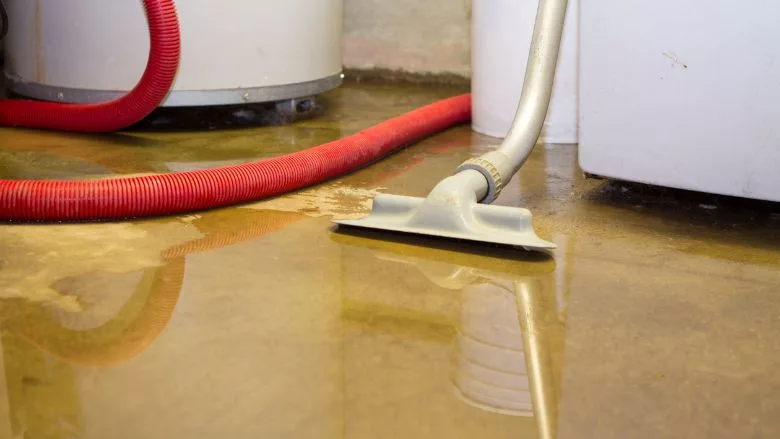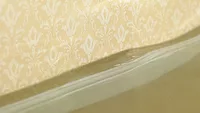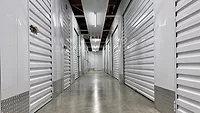How Much Water Causes Water Damage?
Even a small leak can cause thousands of dollars in damages. Here’s what you need to know and share.

Photo Credit: youngvet / Royalty-Free E+
As property restoration specialists, we've likely seen how even small amounts of water can wreak havoc on homes and buildings. While many property owners assume significant flooding is necessary to cause damage worth their attention, many have been absolutely shocked to see that it takes surprisingly little water to create lasting problems.
Here’s an overview from our experience:
- Less than 1 inch: Even this small amount can destroy hardwood flooring and baseboards. Even just 1/4 inch of water from a window leak can cause around $2,000 in hardwood floor damage within 72 hours.
- 1-2 inches: At this level, drywall wicks water up to 24 inches above the water line. Take, for example, around 1.5 inches of water from a burst pipe. This can result in $10,000-$12,000 in damage to walls and flooring.
- 2-4 inches: Insulation becomes saturated, electrical outlets are compromised, and furniture is often unsalvageable. You’re looking at $20,000-$25,000 in structural damage.
- 6+ inches: Structural elements like support beams become compromised. When foundation of a home gets damaged, you may not even be able to repair some parts of a home. These cases are the extreme and rarely happen though.
Let me now cover a few other things you should know.
What Happens Immediately After a Leak
When water first infiltrates a property, the damage begins almost instantly. We’ve had customers ask us: “How quickly can water losses happen?”
To that question, I always say right away. Porous materials like drywall, wood, and insulation immediately start absorbing moisture. Within the first few hours, these materials can become saturated, leading to swelling and warping. At that point, they’ll likely need to be replaced and can’t be saved. Even a small leak from a pipe or roof can trigger this process, which is why we always emphasize immediate action when water is detected. For instance, a drywall with just 1% dampness needs to be replaced.
Water Damage Timeline
Through countless restoration projects, we've documented how water damage progresses over time:
- First 24 Hours: Materials begin absorbing water, paint may start bubbling, and wooden floors can show early signs of warping. A musty odor might develop as moisture seeps deeper into structures.
- 24-72 Hours: The situation becomes more critical. You may see significant warping of wooden items, metal surfaces beginning to corrode, and the first signs of mold growth appearing.
- 3-7 Days: At this point, structural integrity may be compromised. You may witness walls and ceilings sagging, severe mold infestations taking hold, and electrical systems becoming hazardous with high risks of electrocution.
- Beyond 7 Days: The damage becomes extreme, often requiring complete reconstruction of affected areas. The home, at this point, is uninhabitable.
Categories of Water Damage
As you know, in our industry, we classify water damage into three distinct categories based on contamination levels.
This aids this topic because just small amounts of black water may be a lot more dangerous than other categories. Here’s why:
- Category 1 (Clean Water): This comes from sanitary sources like broken water supply lines. While it's the least harmful, we've seen it cause significant structural damage if not addressed promptly although, to be fair, it takes a lot of it for that to happen.
- Category 2 (Grey Water): Moving on, grey water can contain contamination from sources like washing machine overflow. What’s in it? Chemicals, dirt, filth, maybe even urine, dust, and other things.
- Category 3 (Black Water): Black water is severe, coming from sewage or flood water. It’s very dangerous, and I’d much rather treat a lot of clean water than a smaller sewage backup. It’s more difficult and expensive to clean, requiring serious sanitization efforts. It can contain a lot of different types of human, commercial, and industrial waste.
Early Signs of Water Damage
Knowing these can help your customers react in time:
- Dark or wet spots on ceilings and walls, often appearing as yellowish-brown stains
- Peeling or bubbling paint and wallpaper, particularly in bathrooms and near windows
- Warped or buckled flooring, especially in bathrooms and kitchens
- Persistent musty odors, even when no visible damage is present
- Unexplained increases in water bills, suggesting hidden leaks
- Visible mold growth, typically appearing as black or dark green spots
- Sagging or soft spots in ceilings and walls
- Water droplets or condensation on walls or pipes
How to Prevent Water Damage
Regular maintenance checks of plumbing systems, roofs, and gutters are essential. We recommend installing water detection systems in high-risk areas. Having damaged seals around windows and doors replaced promptly can prevent water infiltration during storms. And that’s it! I hope this article was helpful enough for you to keep tackling your projects with more confidence. Good luck!
Looking for a reprint of this article?
From high-res PDFs to custom plaques, order your copy today!









